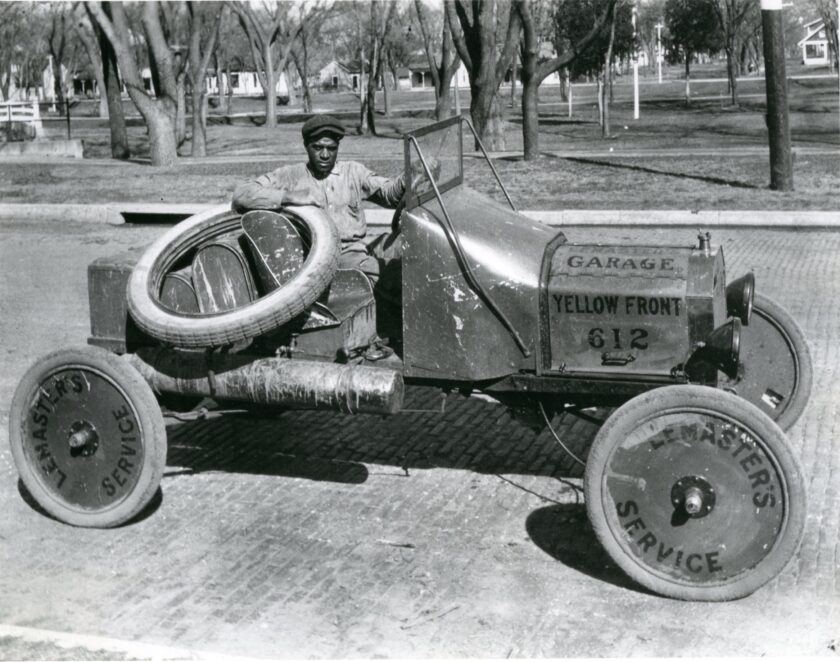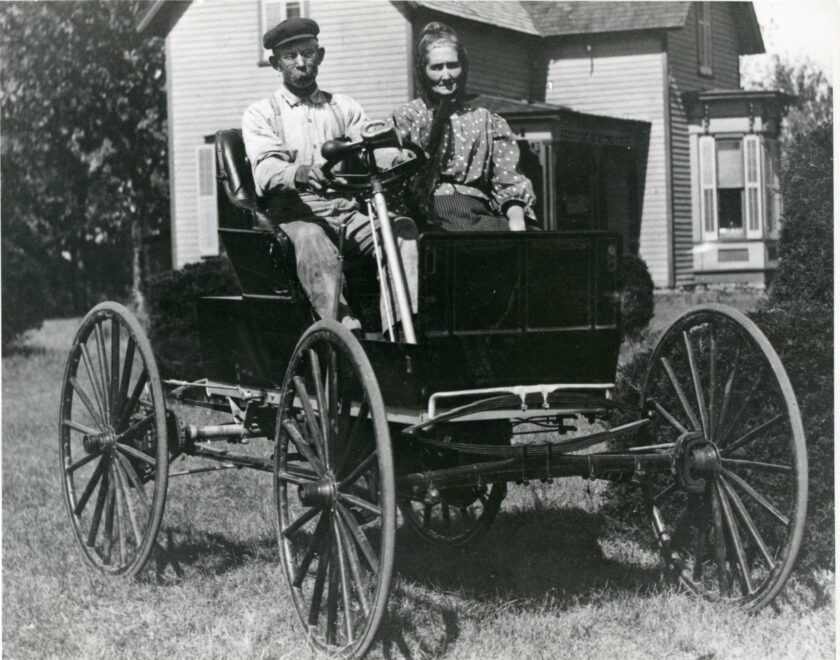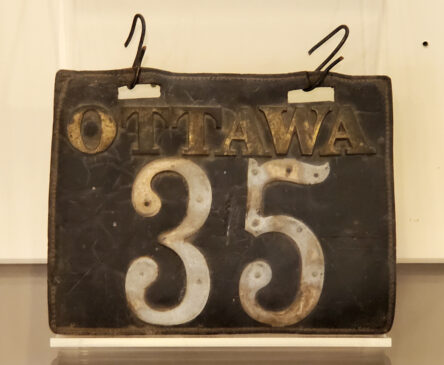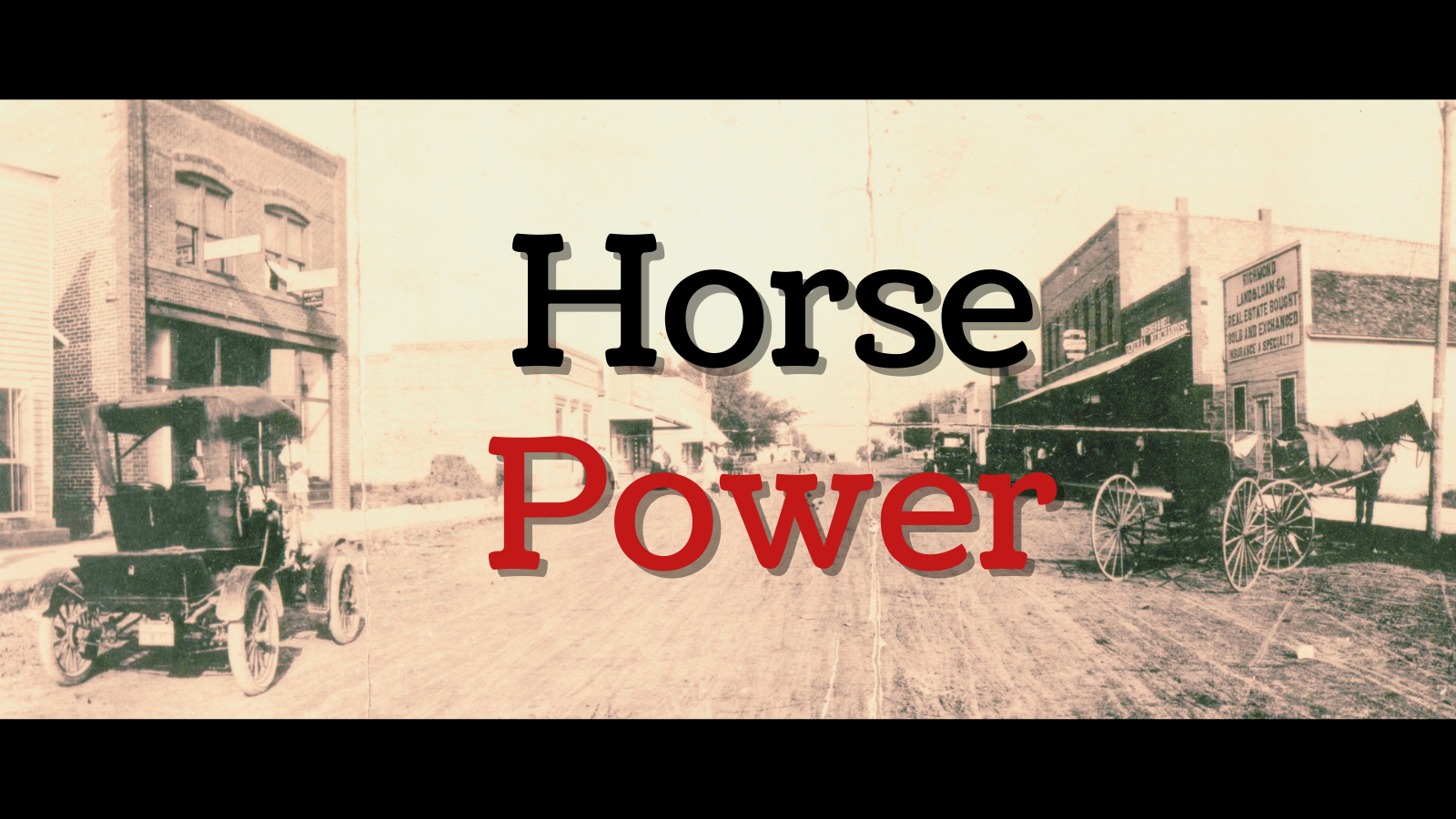Horse Power
Now through August 2022 at the Old Depot Museum

The Franklin County Historical Society’s newest exhibit, “Horse Power,” explores the transition from horse-drawn buggies to horseless carriages and how the automobile shaped our streets and our culture. The exhibit will be on display at the Old Depot Museum in Ottawa, Kansas, through August 2022.
In 1899, the Ottawa Herald reported that “Franklin County has 6,622 horses. As yet, she has no automobiles.” “Horseless carriages” were still a rarity in Kansas; in 1900, Kansas ranked tenth in the U.S. in the number of automobiles with just 220 vehicles in the state.
In 1903, the first seven Franklin Countians—four from Ottawa, and three from Williamsburg—purchased their own vehicles. They were slow to take them out on the streets because they had to learn how to drive them first. These vehicles broke down easily, couldn’t handle rutted, muddy roads, and were frequently involved in accidents. Dr. O.O. Wolf won Franklin County’s first car race that year because his car was the only one that ran for the duration of the race.

Local and state governments grappled with how to regulate these new machines and make streets more amenable to vehicles. Prior to the introduction of the automobile, street planning was often haphazard and lacked funding. In the 1890s, the League of American Wheelman formed in part to lobby for better roads for bicyclists. They were soon joined by the U.S. Postal Service, which began offering free rural mail delivery in 1896—but only to rural addresses along improved roads. The Kansas Good Roads Association was established in 1900 to advocate for better roads for automobiles across the state, though the State of Kansas did not have the authority to spend money on road improvements until 1929.
Meanwhile, Kansas passed its first speed limit—restricting motorists to 10 miles per hour in town—in 1903.
As automobile ownership increased, livery stables and buggy shops gave way to gas stations and tire stores. Franklin County’s leisure activities soon included car races, drive-in movies, and car shows.

More than forty photographs and artifacts are on display, including a rare leather Ottawa municipal automobile license plate, a 1910 autotop buggy built by Emerson Brantingham Co., and a Wellsville-built “Fisher Gas Teller,” which shut down Model T Fords when there was one gallon left to alert the driver it was time to refuel.
Admission to the Old Depot Museum is free, though donations are always appreciated. In accordance with CDC recommendations, masks are currently required at the museum. For more information or if you have questions, please call the museum at (785) 242-1250 or e-mail director@olddepotmuseum.org.
Established in 1937, the Franklin County Historical Society strives to preserve, present, and promote the history of Franklin County, Kansas. The Old Depot Museum is located at 135 West Tecumseh Street in Ottawa, Kansas. The museum is open Tuesday through Saturday, 10 a.m. to 4 p.m., and Sunday, 1 p.m. to 4 p.m.




